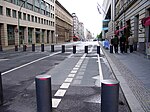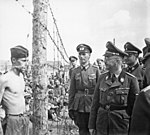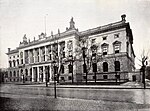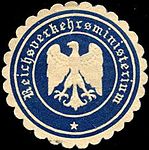Detlev-Rohwedder-Haus

The Detlev-Rohwedder-Haus (Detlev Rohwedder House) is a building in Berlin that, at the time of its construction, was the largest office building in Europe. It was constructed between February 1935 and August 1936 to house the German Ministry of Aviation (German: Reichsluftfahrtministerium - RLM), headed by Hermann Göring, a leading Nazi. During the German Democratic Republic (East Germany) it was known as the Haus der Ministerien ("House of Ministries"). In 1992, it was named the Detlev Rohwedder Building, in honour of Detlev Karsten Rohwedder, the former President of the Treuhand, which had its headquarters there 1991–1995, who was assassinated by far-left terrorist group Red Army Faction in 1991. Since 1999, the building has been the seat of the German Finance Ministry.
Excerpt from the Wikipedia article Detlev-Rohwedder-Haus (License: CC BY-SA 3.0, Authors, Images).Detlev-Rohwedder-Haus
Wilhelmstraße, Berlin Mitte
Geographical coordinates (GPS) Address Phone number Website External links Nearby Places Show on map
Geographical coordinates (GPS)
| Latitude | Longitude |
|---|---|
| N 52.508697222222 ° | E 13.384 ° |
Address
Bundesministerium der Finanzen (Detlev-Rohwedder-Haus)
Wilhelmstraße 97
10117 Berlin, Mitte
Germany
Open on Google Maps











